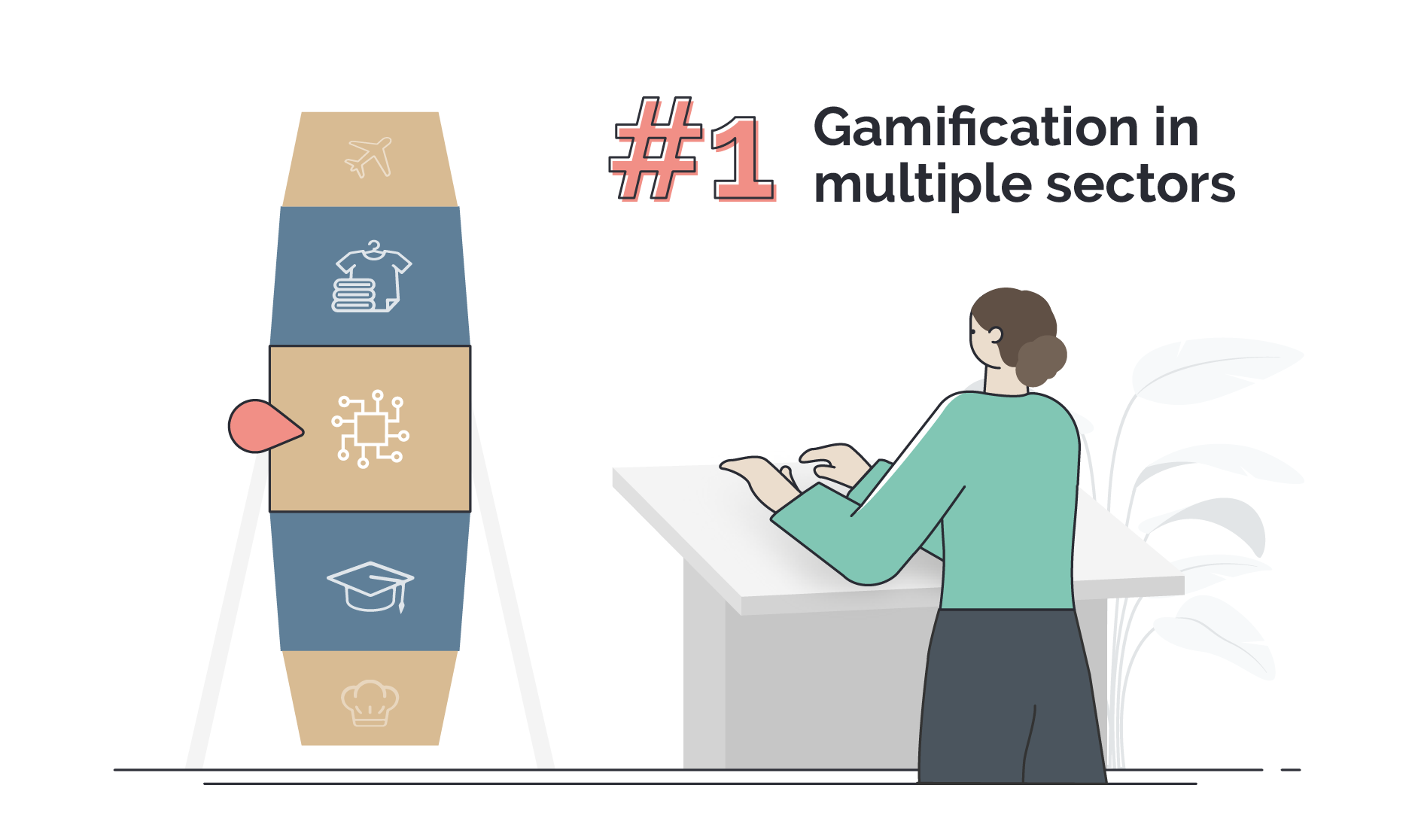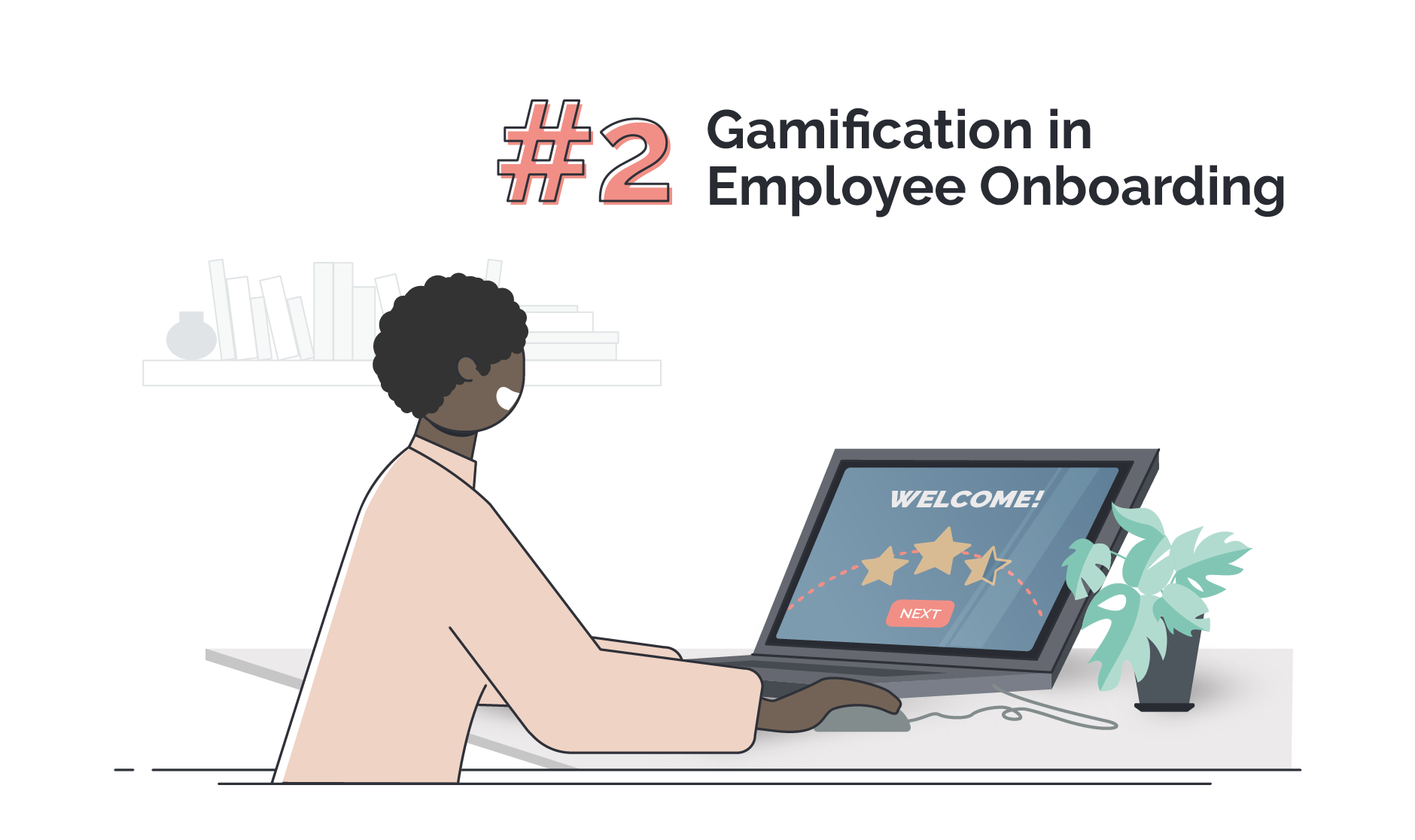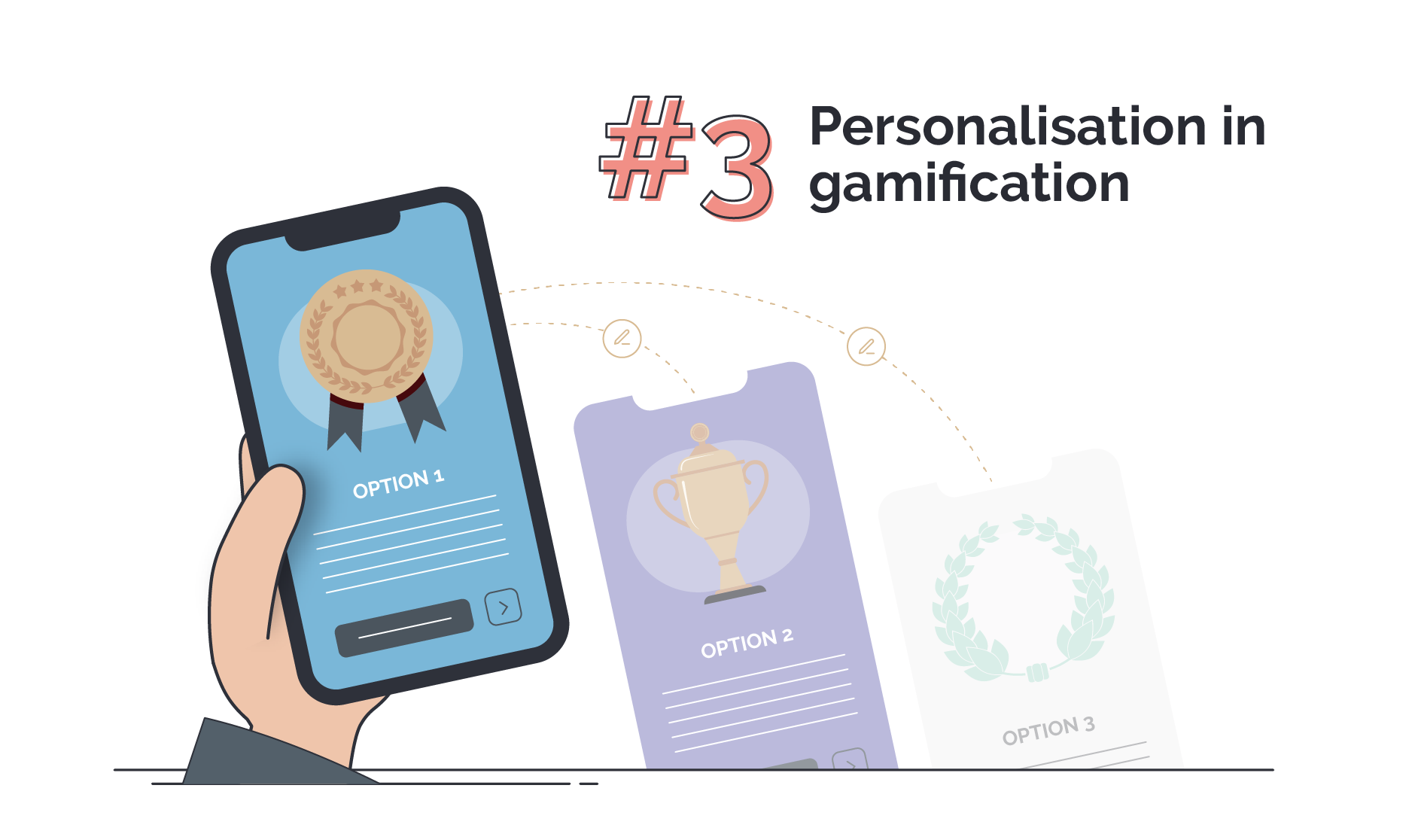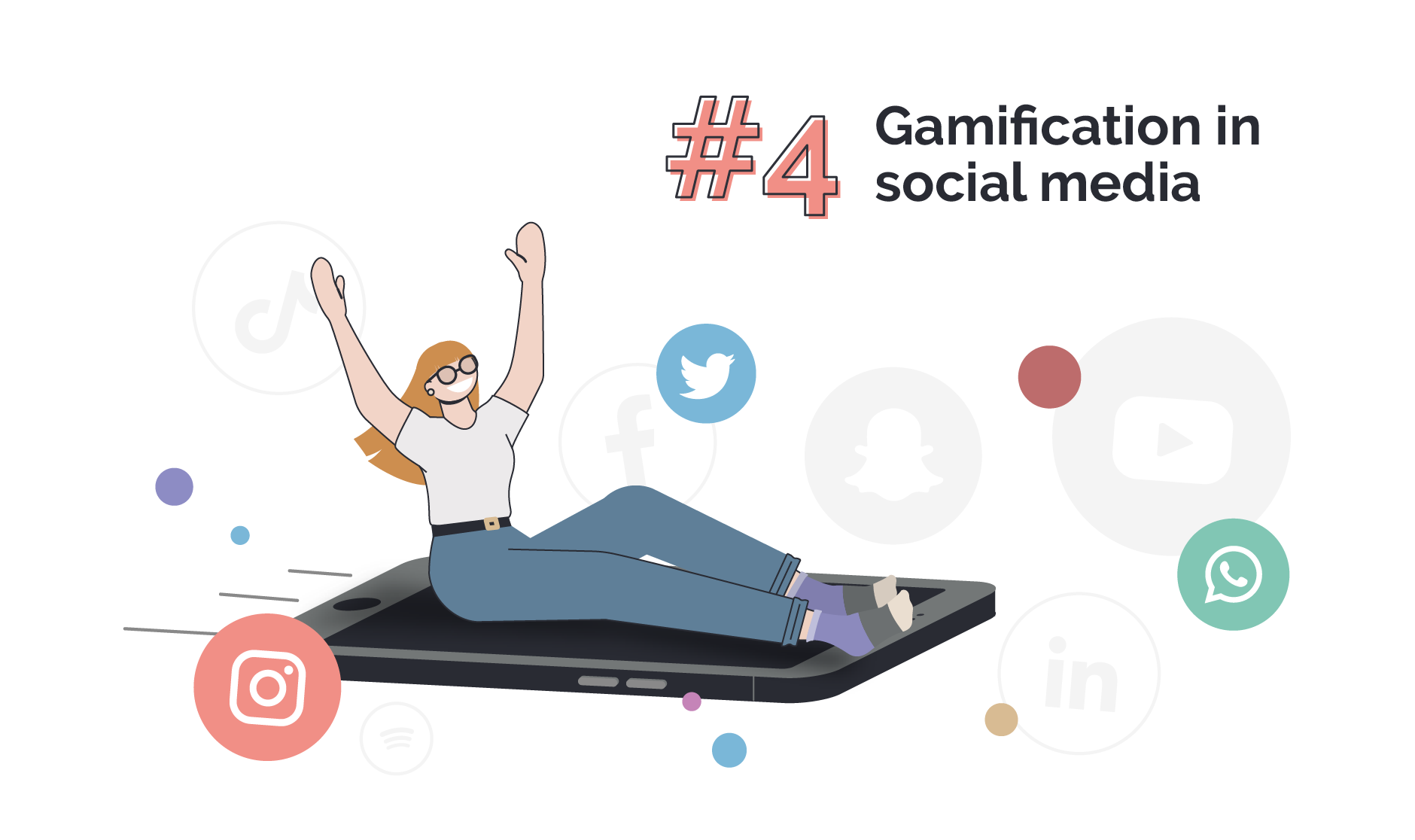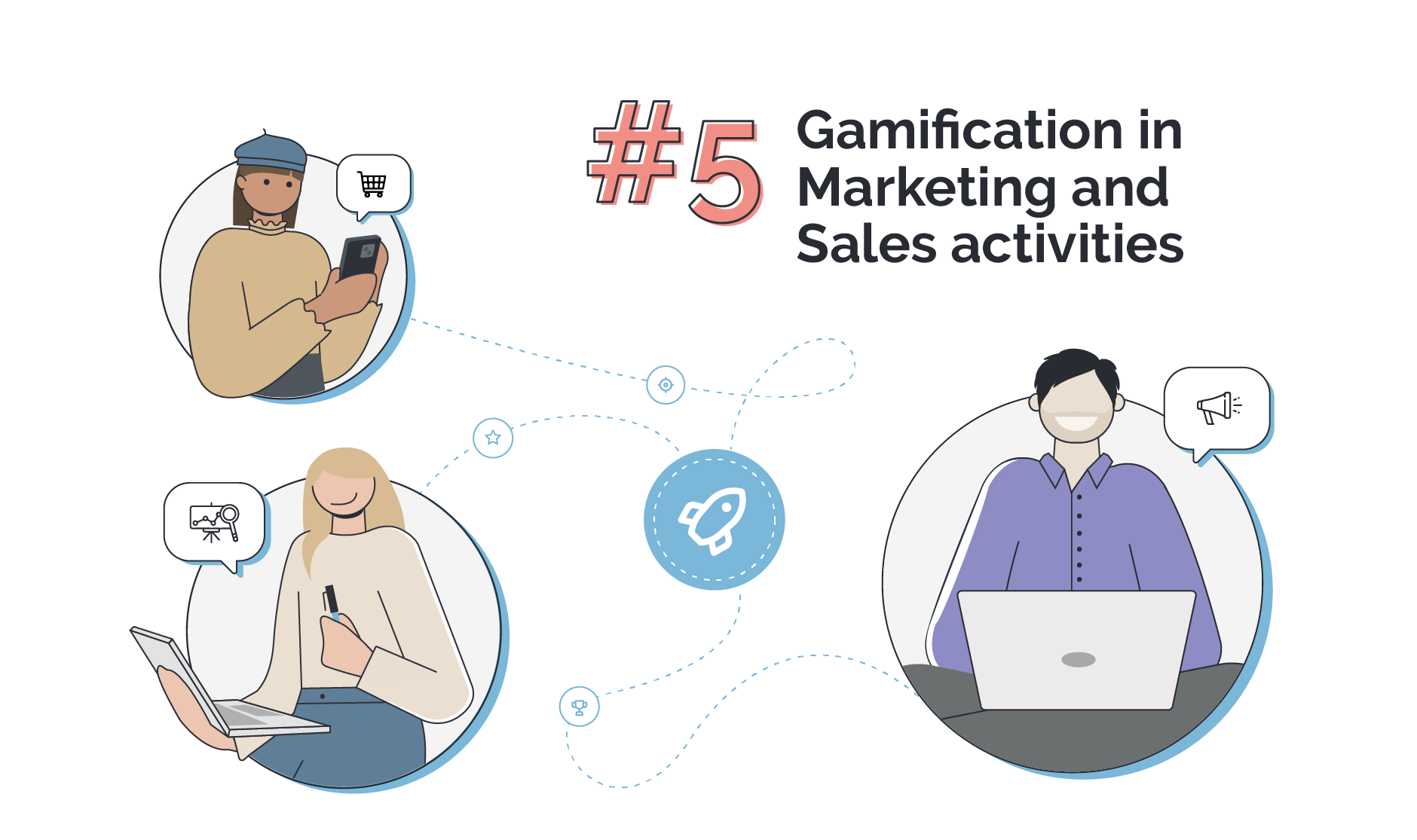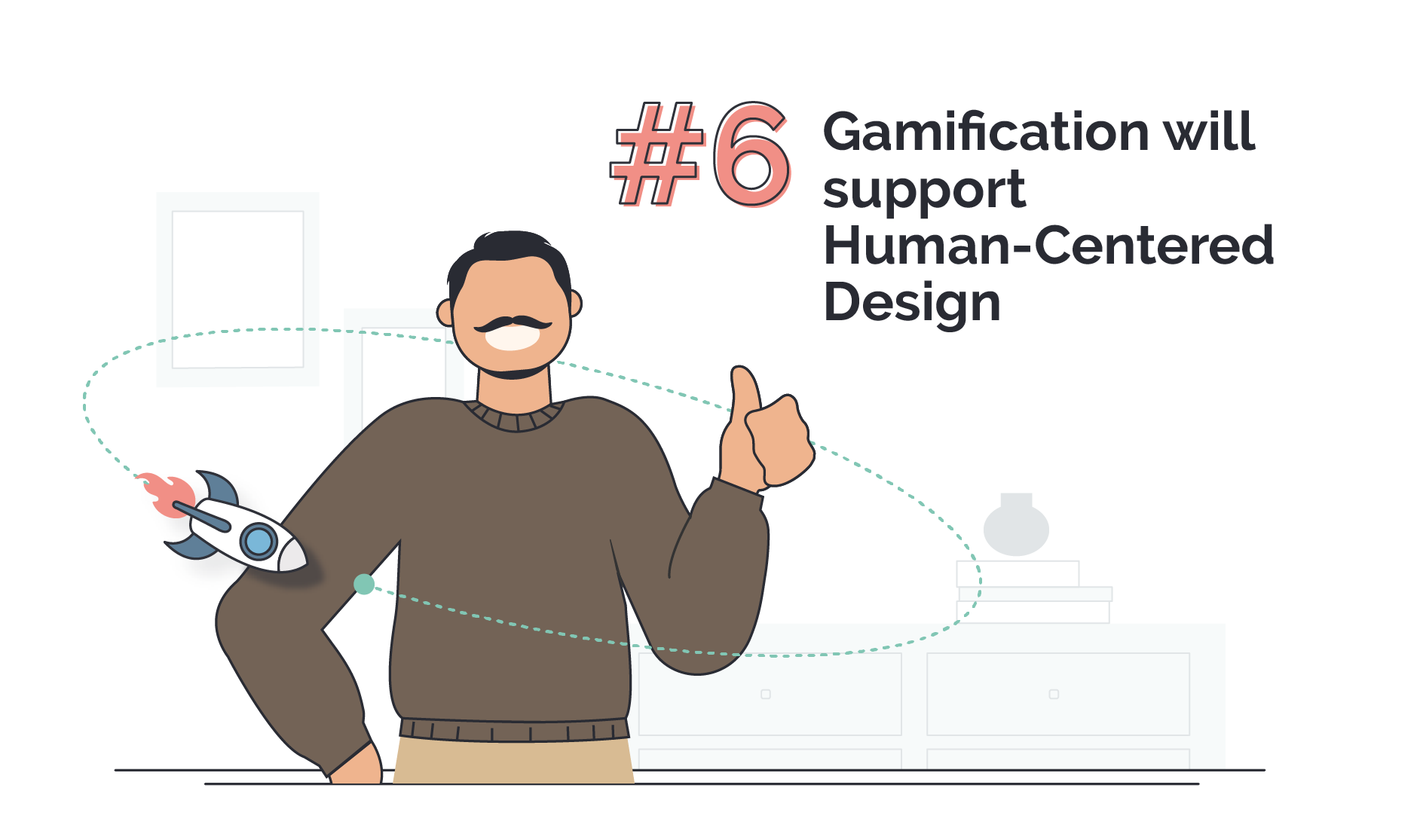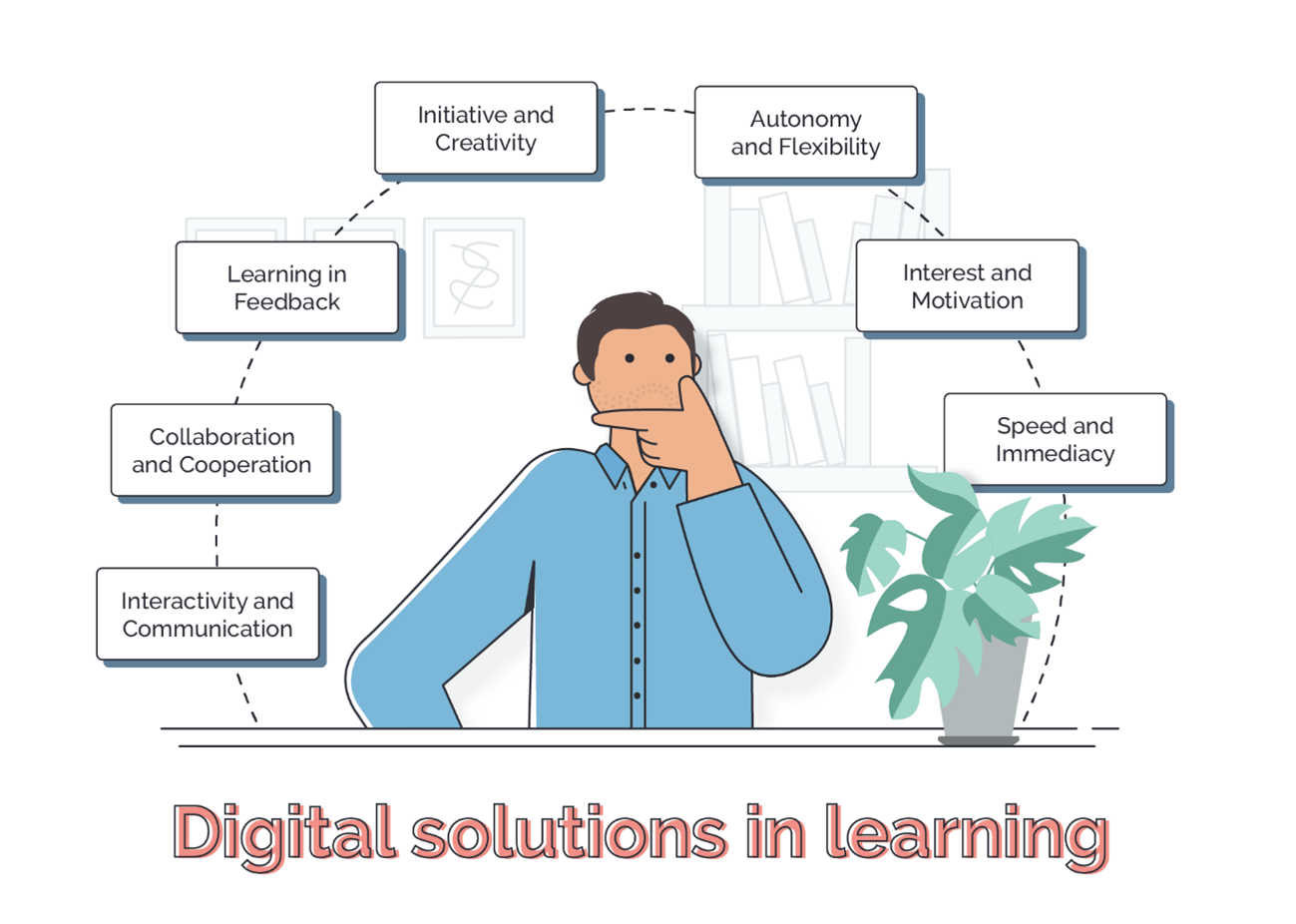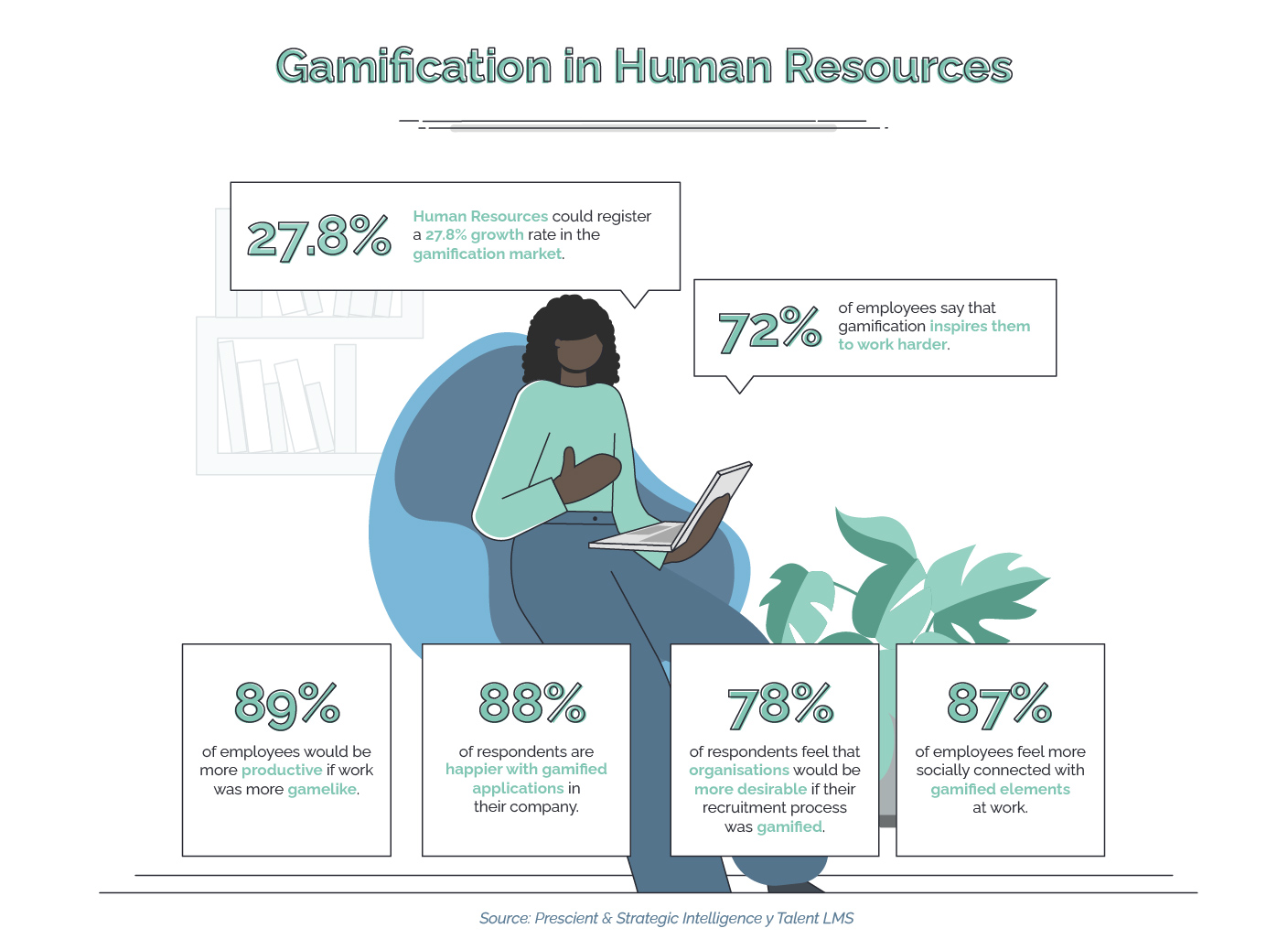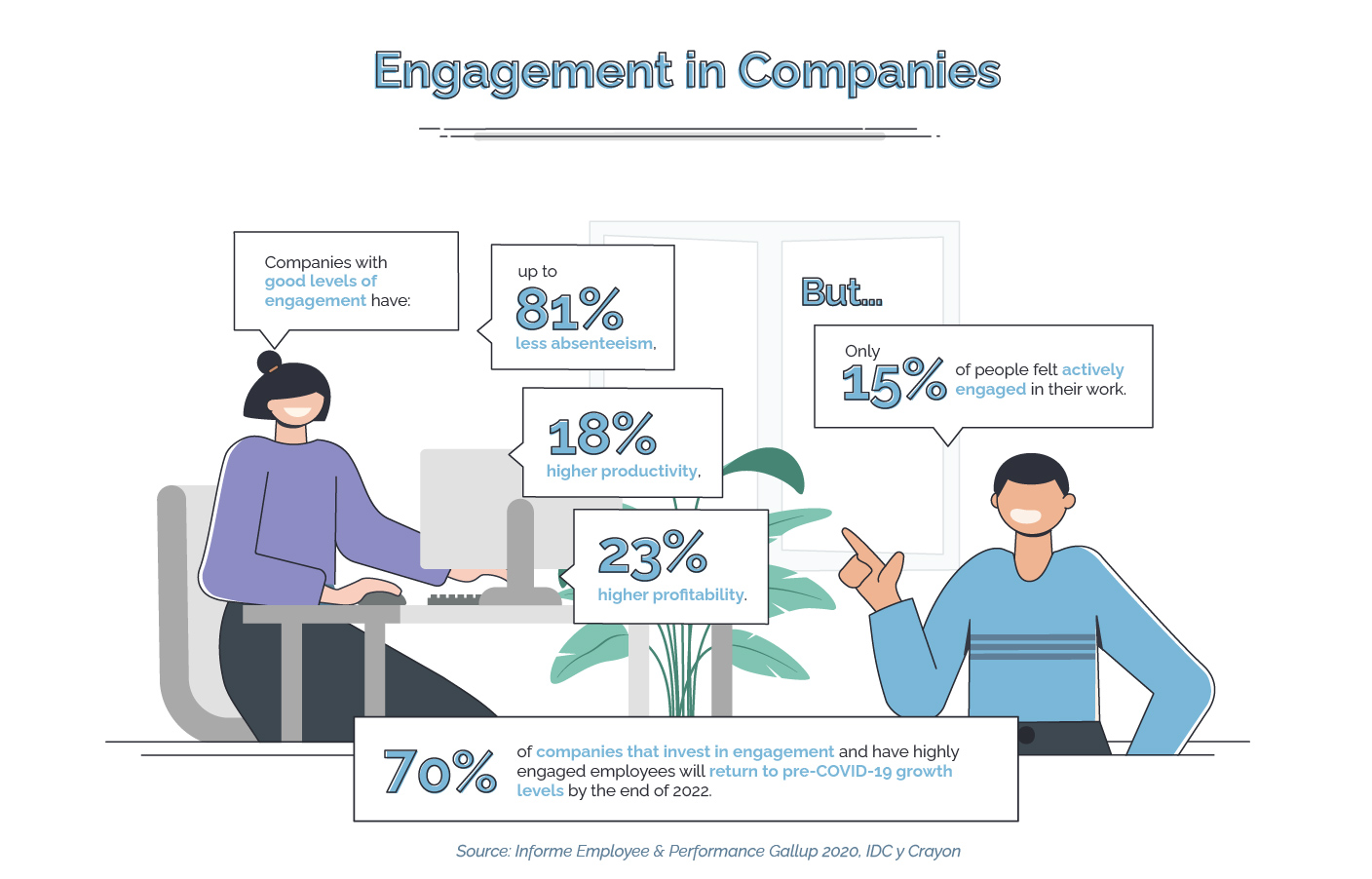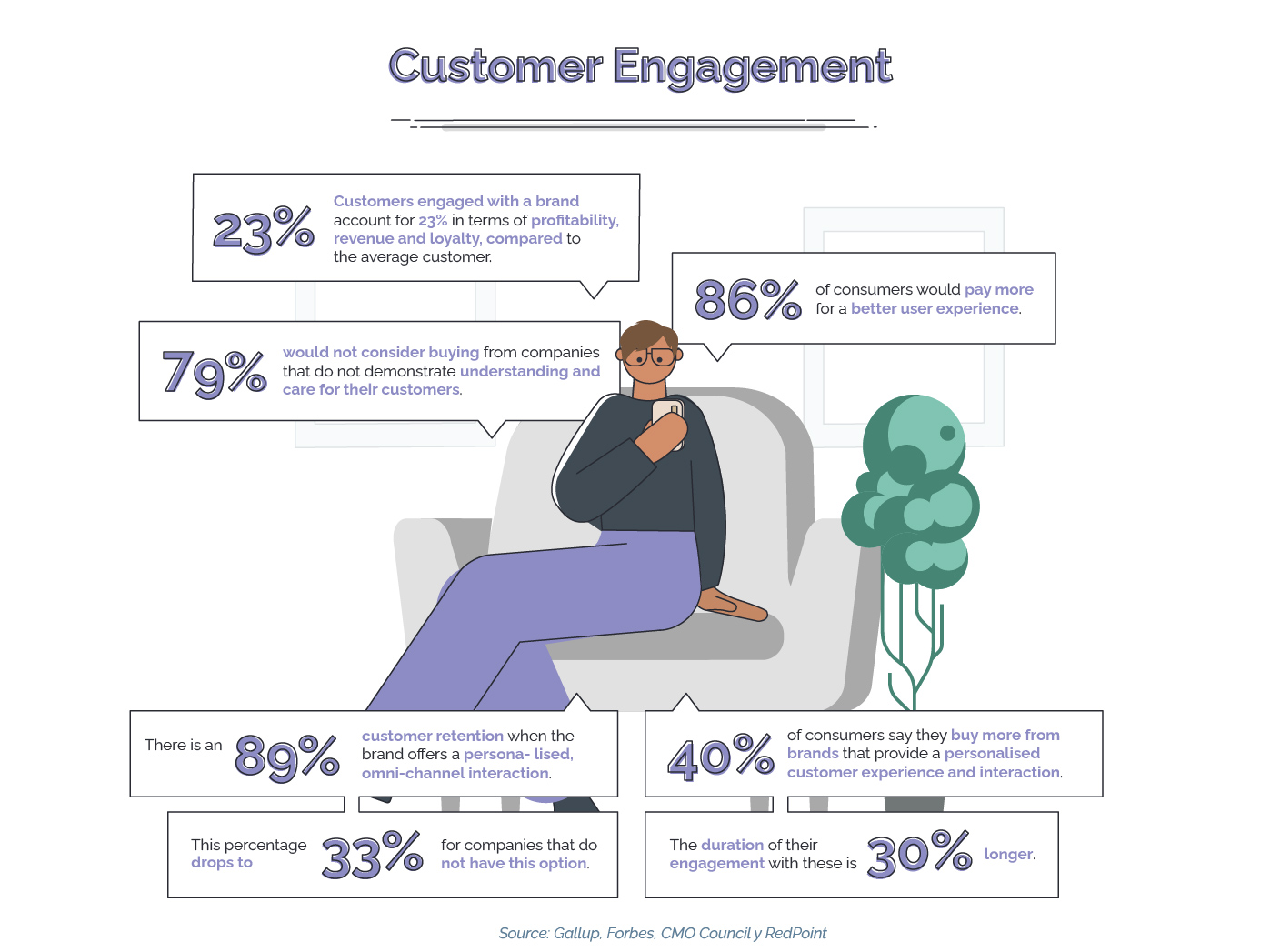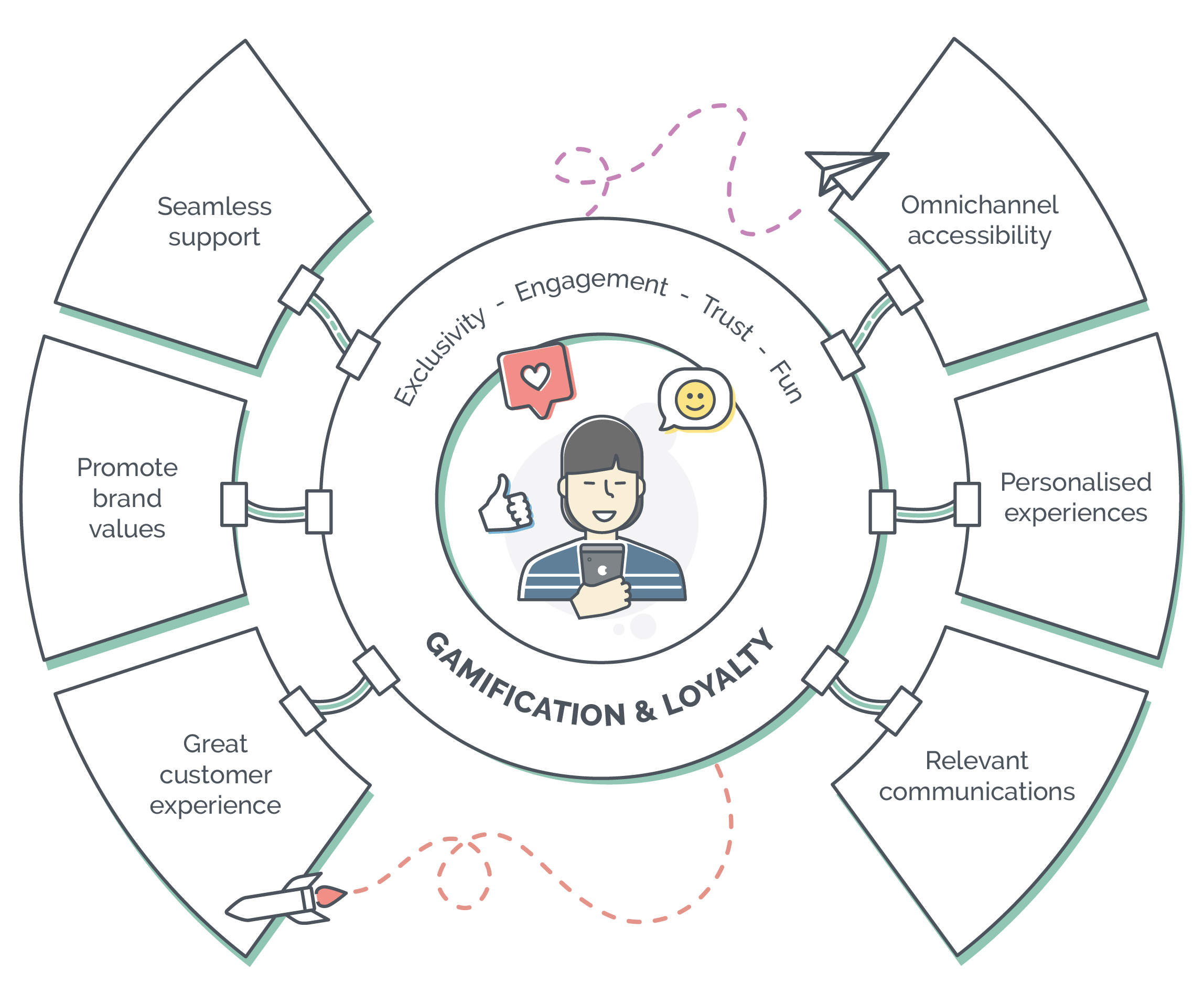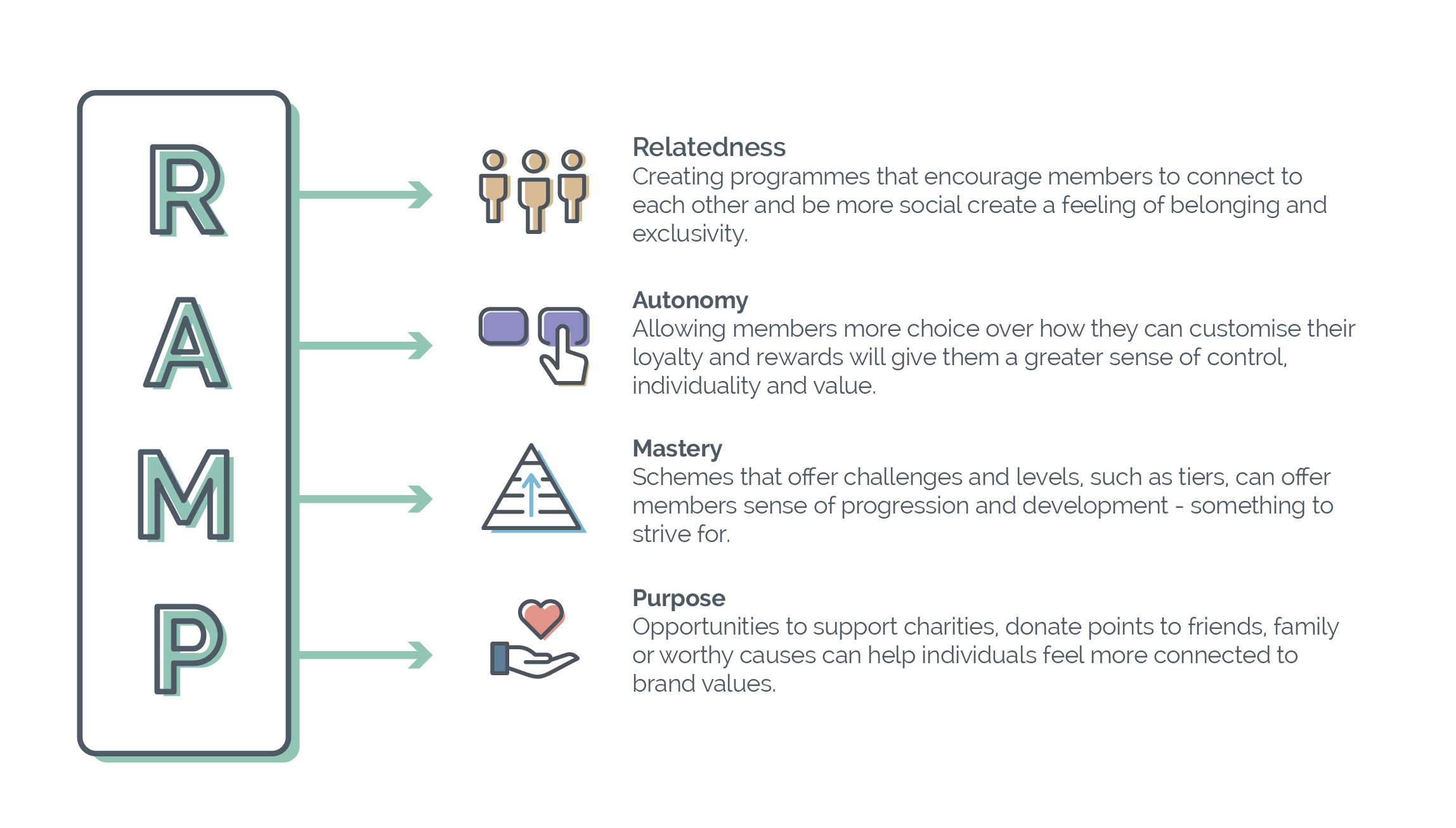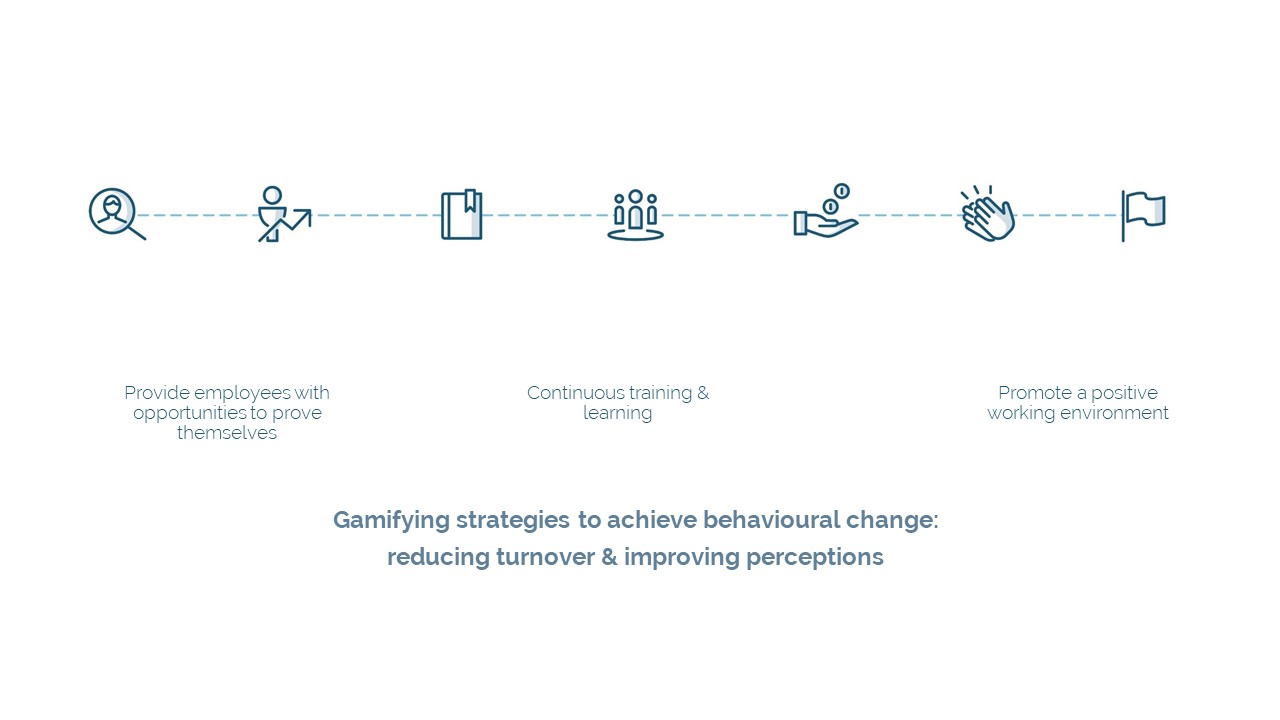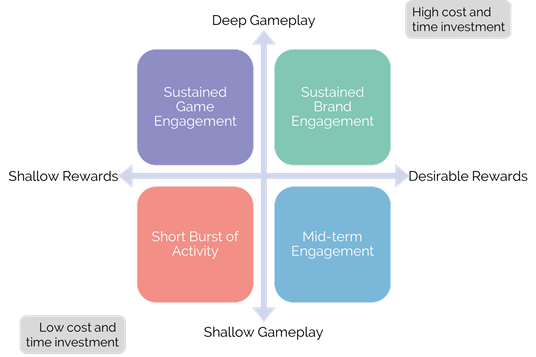Gamification is the technique of integrating game characteristics and mechanics into a digital environment, making use of technology to improve the user experience, foster loyalty and increase engagement. In other words, it is the application of game aspects in a non-game context.
Gamification is gaining popularity at an increasing rate. Today, it is a widely used tool in many fields, such as sales, education, health and wellness, design, employment, business and commerce. For example, gamification is used by stores and e-commerce companies to encourage good consumer behaviour, and used in the corporate environment to increase productivity, efficiency and personal skills.
In this blog you will be able to explore and learn about the diffrent trends in gamification.
Six examples of gamification in various sectors
The following industries have seen significant increases in revenue and customer retention as a result of incorporating gaming aspects into their applications and platforms.
Health and wellbeing: Apps reward you and prompt you to use them more to drive engagement and make daily tasks more enjoyable, turning actions into healthy, daily habits.
Education: Game concepts such as teamwork, objectives, points, and badges are often used to create and engaging atmosphere that encourages deeper learning while still making a subject interesting.
Foodservice: Using gamification to design engaging customer retention programmes and to animate dining experiences. Actions such as ordering through the phone and order tracking functions have created significant changes in this sector.
Transportation: A common feature of many ridesharing and cab apps is a real-time tracker where users can see exactly where their driver is and when they will arrive. As well as numerous loyalty programmes that encourage users to use them more frequently and receive rewards.
Retail: To engage its users, build brand awareness and promote sales, brands and stores use a variety of gamified elements to increase customer engagement such as VR/AR, mini games, pop-up interactive installs in-store, referral rewards and interactive contests.
Banking: Gamification is used to enhance the customer experience. From apps with personalised saving goals to competitions with rewards, gamification is used in banking to produce personal finance management applications that inform their users and help them better understand and manage their finances.
Motivait’s response
At Motivait, our solutions create more engaged and interested customers, no matter the sector. We employ games in a practical way, from badges, goals to quick feedback, that activates customer motivation and builds brand affinity. Gamification is a practical approach to business growth, regardless of whether you run a restaurant, fitness app, retail store or anything in between. If you want to better understand how we work, take a look at our video on how we can help you innovate an improve the way people feel and experience your brand.
(Sources: FinancesOnline, Trio, Motivait)
Employee onboarding can be a time-consuming task. However, onboarding is a crucial factor for a company’s new employees. The importance of first impressions cannot be overestimated. You only get a small window of opportunity to describe the type of experience potential employees can expect when working for your organization. This is where gamification comes in. Studies have revealed that delivering information through a gamified form results in greater assimilation and retention. The two main objectives of gamification as an onboarding method are to make training enjoyable and to accelerate the pace of learning.
Six advantages of using gamification in Onboarding.
- Positively represents the company – Employees say gamification makes them feel: 89% more productive and 88% happier at work. (Source: Talent LMS)
- Offers the ability to receive instant feedback – Gamified Onboarding programmes typically include: 59% points systems, 51%leaderboards, 47% levels and 71% badges. (Source: Talent LMS)
- Improve retention – 12% of new hires voluntarily leave their company during the onboarding process (Source: Brandon Hall Group). Finding ways to make work more fun can increase skills retention by 40% (Source: Forbes)
- Increases employee engagement – 87% of employees say that gamification provides a sense of belonging and social connection in the workplace. (Source: Talent LMS)
- Aligns onboarding with important business objectives – Tools employees would like to see gamified: 33% training software, 30% communication software, 15% customer relations/HR software, 10% documentation software, 12% collaboration and PM software (Source: Talent LMS)
- Decreases employee attrition – The cost of replacing an employee range from 90-200% of their original salary (Source: Talent LMS)
Motivait’s response
At Motivait, we use technology to create an engaging, interactive and game-based process to meet your onboarding objectives and help new employees become competent in their future responsibilities. It could be the perfect opportunity to change things up and incorporate some gamification into your onboarding to make new hires happy and productive workers. If you want to better understand what we do, take a look at our work with Zebra Technologies, where we developed a global onboarding process with an immersive experience.
(Sources: Motivait, FinanceOnline, Staffbase, Talent LMS, Brandon Hall Group, Forbes)
Gamification offers users highly engaging and immersive experiences. To further enhance its impact, companies can start by implementing customised gamification strategies to improve both employee and customer engagement.
74% of consumers are frustrated when they receive content that has nothing to do with their tastes and interests. 94% of companies say personalisation is critical to their success.
We all know that “one size does not fit all”. For example, in the learning environment, today’s learners want to invest time in training created or selected specifically for them in order to get the most out of their time.
The following points serve as an example of how tailored-made gamification can benefit the increase of student engagement:
Personalised learning route: Suggest the most suitable path for the user or provide the ability to customise the user’s own route.
Individual performance indicator: Personalised gamification can go beyond scores/badges and leaderboards by providing users with information on their performance in relation to learning objectives.
Real-time personalised feedback and suggestions: Set up suggestions to cover any tips on how to improve their skills.
Calls to action: Can be used effectively to motivate change through specific calls to action to help users meet their training objectives.
Continuous learning: Gives the user the opportunity to maintain the learning connection even after the main training has ended.
While gamification in itself is a strategy that fosters a huge degree of engagement, methods such as personalised gamification can serve to further increase participation, motivation and performance.
Motivait’s response
At Motivait we stand out for providing our clients with the best personalised solutions tailored to their needs. One of our success stories is ‘Tir Na Nóg’, the mythical island that transformed the concept of mathematics for many children in a public school in Madrid. The experience was a clear example of the effectiveness of engagement solutions and the use of gamification in training and learning. If you want to understand better how we did it, take a look at our Case Study.
(Sources: Motivait, GrowthEngineering, eLearningIndustry)
More than half of the population now uses social networks. The same neurotransmitters that make games so addictive are released when people use social media. Dopamine, for example, is released whenever we learn something new. Similarly, when we engage in rewarding social interactions, we experience a rush of oxytocin.
Many companies today are gamifying their social media campaigns to increase trust and one of the key KPIs such as brand engagement. Large companies have included gamification components in their social media strategy, such as M&M’s, LinkedIn and Waze in order to promote user interaction with their posts. Gamification has the potential to be a game-changing marketing tactic for companies looking to increase engagement, attract repeat customers and gain crowdsourcing capabilities.
Gamification can be as basic or as complicated as one chooses. Here are some possible examples:
- Live video games on a website
- Surveys
- Offer prizes to people who review, like, comment or contribute content
- Posts contests on social media
- Create a ‘scavenger hunt’ type game on social media
The impact of gamification on social media
- Website with gamification experience a 29% increase in page shares.
- Gamification increases comments by 13%
- Gamification increases social sharing by 22%
- Gamification amplifies content discovery, increasing engagement in the activity feed by 68%
(Source: GrowthEngineering)
It is expected that more companies will soon follow suit. Gamification has the advantage of introducing some fun into the social media approach, which is a benefit. Your audience’s engagement is likely to increase dramatically as a result of their entertainment. After all, research has shown that social media can increases engagement metrics by 100-150%. In addition to growing your community of followers, you may also be able to capture long-awaited leads.
Motivait’s response
We recognise gamification as a versatile tool that can be used for both business and educational as well as marketing purposes. Our work with gamification can help companies build a strong online presence and improve audience engagement. By incorporating the features of prizes, immersive storytelling and competitions, these can be used as a powerful tool to amplify any social media campaign. If you would like to find out more about how we can help you promote your brand while creating a fun experience for your customers, don’t hesitate to contact us!
(Sources: GrowthEngineering, Meltwater, Spectrio, Motivait )
To achieve their acquisition and retention goals, today’s businesses are gamifying their marketing initiatives. Gamification is used to engage people at every stage of the customer journey.
Gamified content improves the sales funnel (Awareness, Consideration, Preference, Purchase, Loyalty, Promotion). It is an engaging process, so people tend to remember it. This, in turn, creates better brand awareness.
Here are some benefits of using gamification in marketing and sales activities:
- It drives customer engagement. Users are less likely to pass over content.
- When users are encouraged to complete tasks for rewards, conversion rates soar. The reward can be a badge, a trophy, points or any other specific feature.
- As visitors become more engaged with your content, brand awareness and loyalty increases.
- Finally, gamification is fun!
According to the Demand Gen report, 93% of marketers love gamification and plan to use it in their future activities. Here are some key takeaways from the report on what marketers are saying:
- According to 81%, interactive content is more attention-grabbing than static material.
- 88% say that interactive content is effective in differentiating their brand from competitors.
- 79% agree that interactive content can have reusable value, which translates into repeat visits and multiple views.
- Around 70% believe that interactive content successfully engages users.
Gamified marketing also gives users the impression that they are in control. They are free to decide how to interact with the content. This provides a new level of fun and excitement that is rarely present in other situations.
Motivait’s response
At Motivait we make sure we live up to our client’s expectations. Most of our clients are looking for rewarding and innovative experiences. When it comes to marketing campaigns, we can provide such experiences with gamified solutions that make your content and optins fun and engaging. Today, we are subject to so many influences that it is difficult to focus on a single message. However, people always try to make time for entertainment because it is a time when they can switch of and enjoy themselves. Therefore, we can conclude that gamification is an accessible and very beneficial method of self-promotion if we combine this feeling of joy with the pleasure of receiving rewards. If you want to know more about our engagement and loyalty solutions click on our video!
(Sources: GrowthEngineering, OptinMonster, DemandGen, Motivait)
Human-Centered Design is a problem-solving technique that places real people at the centre of the development process, enabling the creation of products and services that appeal and adapt to the need of their audience. The goal is to take into account the desires, pain points and preferences of users at every stage of the process. In turn, you will create more intuitive and accessible products that are likely to generate higher profits because your customers/employees have already examined the solution and feel more interested in using it.
Studies show the growing importance of human-centred design in meeting the needs of today’s workforce. Furthermore, empathy from managers is what drives 92% of employees to stay in their jobs. Therefore, employee input now influences the design of gamification methods. Companies are now starting to coordinate their organisational goals with the values of their employees.
Gamification and human-centered design are based on the same principles of focusing on the user, finding and approach that maximises desirability with feasibility, and adopting an experimental approach to find the best solution.
There are the same three phases, which are:
- Intention discovery, empathising with users and defining the future state
- The iteration and creation of ideas and prototypes
- The delivery and launch of something in the real world
Motivait’s response
For us, gamification is a crucial aspect when creating our solutions. Human-centered design encourages us to focus on behaviour. With today’s social, environmental and business challenges, changing user behaviour is the cornerstone of tackling modern problems. Technology also allows us to create more engaging user experiences, through interactive components, real-time data and information, and social connectivity. Our inherent purpose of applying gamification is to provide an engaging experience to incentivise behaviour and increase user engagement in solving real problems. If you want to better understand how we deliver user-centric digital solutions visit our website for more information, and don’t hesitate to contact us!
(Sources: HBS Online, BCG, TTISI, Medium, Motivait)

